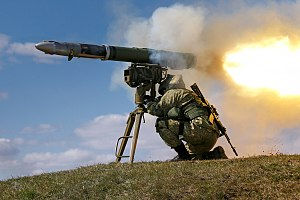A short guide to Russian battlefield equipment employed in Ukrainian theatre
- The Paladins

- May 10, 2022
- 3 min read
Updated: May 24, 2022

(We welcome all observations and corrections.)
The purpose of this article is to familiarise the general public with the sorts of weapons that Russian forces are using in Ukraine.
Why is this important? So that members of the public can assess whether any specific assertion about the use of military equipment by Russian armed forces is in fact likely to be a Russian military action.
Russians do not use bombs dropped by aeroplanes. Their thermo-nuclear capacity is virtually entirely intercontinental ballistic missiles; conventional warheads are typically delivered by various types of supersonic or hypersonic ballistic missiles fired at long range from ships, aeroplanes or ground mountings. These days short to medium range bombs are considered too dangerous to deliver in light of the effectiveness of contemporary surface-to-air missiles and sentry guns.
Indeed Russians are not using aeroplanes to any significant extent in Ukrainian theatre, by reason of the risk of their being shot down by US patriot or similar surface-to-air missiles.
All Russian ballistic missiles are supersonic or hypersonic, to prevent vulnerability to sentry guns or other short range defences. This is an area in which contemporary Russian ballistic technology excels.
The US tradition of using accurate subsonic tomahawk (in Ukraine they are called Neptune) cruise missiles with low explosive detonation warheads does not have a parallel in Russian military technology. It is normal for Russian ballistic missiles to travel at hypersonic speeds and to carry high explosive or fragmentation warheads.
The Kalibr Russian hypersonic cruise missile, that travels at Mach 2.5 to 5+, has an effective range of several hundred kilometres. It is not known how many of these missiles the Russians have in active service, but they seem to have a lot. They can be fired from a variety of platforms. They are being used in substantial part to knock out Ukrainian ammo dumps, particularly those hoarding western-supplied ammunition.
Russia has a tradition, that the United States does not have, of short-range tactical ballistic missiles with hypersonic speeds fired from ground installations or even shoulder-mounted.
Russian inertial guidance systems are every bit as accurate as their US equivalents, notwithstanding the higher speeds at which their ballistic missiles travel.
Russian SAM's, particularly the S-400 system, are considered some of the best in the world.
Contemporary Russian artillery shells, in particular the Krasnopol, are laser-guided and have effective ranges of 20-25 kilometres. They all carry high-explosive warheads, which is why they do so much damage. Krasnopol shelling systems are considered amongst the world's very best; but they do have a reputation for substantial collateral damage.
Both Russia and NATO have shelling / howitzer systems with accurate ranges up to circa 50km; but it seems that neither side has these systems in Ukrainian theatre in substantial numbers (so far; the possibility for escalation exists).
Russia is estimated to have between 12,500 and 23,000 tanks. Nobody really seems to know exactly how many they have. Some reports suggest that up to 600 Russian tanks have been destroyed or disabled in Ukraine so far. Let us estimate that 10 Russian tanks a day are being destroyed in the Ukrainian war. How many tanks are the Russians making each day?
It has been asserted to us that the Russians have the capacity to replenish their military hardware at the same or a greater rate than it is bring depleted; but at the current time we cannot think of any conceivable way to verify or disprove this assertion. We welcome any suggestions in this regard.

A ship launched Kalibr hypersonic cruise missile

Tochka-U surface launched hypersonic short-range ballistic missile

Krasnopol laser-guided artillery shell surface launched

S-400 Surface-to-Air surface launched missile system

Iskander short to medium range surface launched supersonic ballistic missile

Kornet shoulder-launched laser-guided short to medium range tactical ballistic missile




Comments